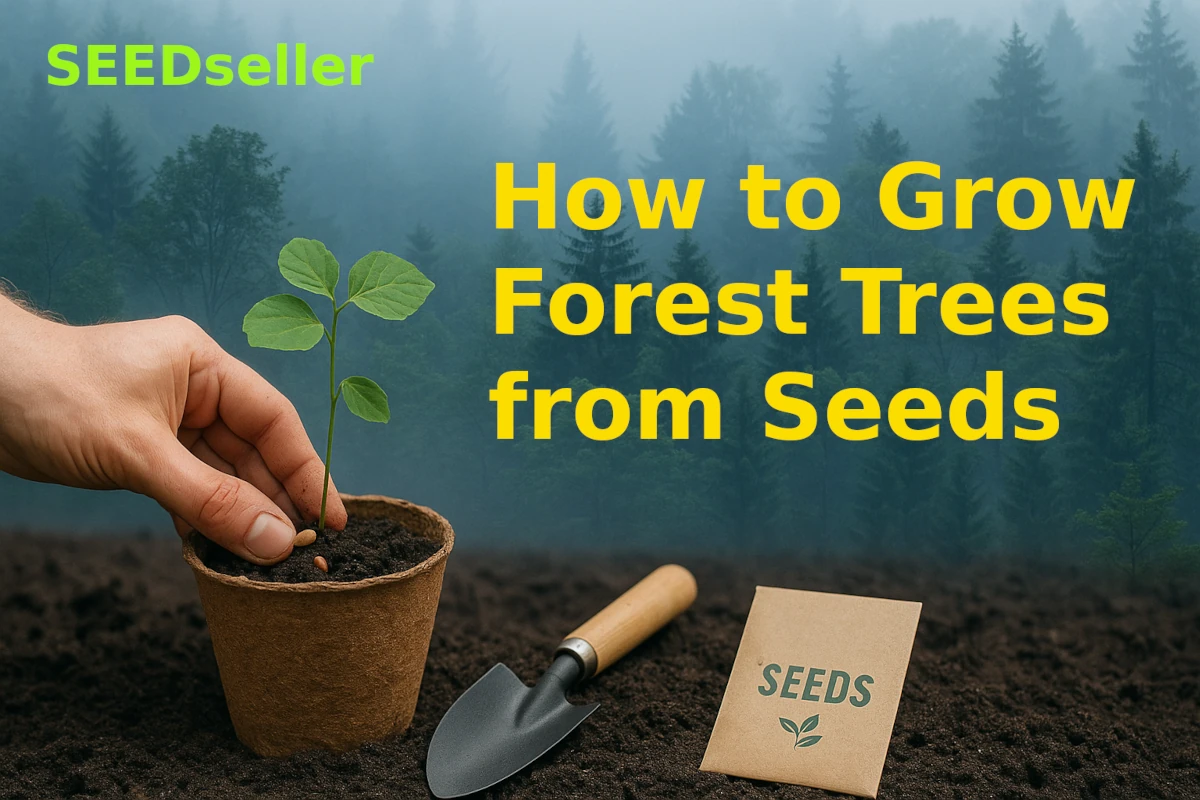
How to Grow Forest Trees from Seeds – Beginner’s Guide (India)
🌱 Introduction
Planting forest trees from seeds is a rewarding and sustainable way to rewild land, improve biodiversity, or grow timber and native species. Whether you’re restoring a patch of degraded land, starting a tree plantation, or just want to grow your own saplings for agroforestry, this guide will help you get started the right way.
🌾 Step 1: Select the Right Seeds
Choose native or adapted species based on your region, climate, and soil. Popular forest tree seeds in India include:
- Teak (Tectona grandis) – High-value timber
- Indian Rosewood (Sheesham)
- Arjun (Terminalia arjuna) – Medicinal & riverbank stabilizer
- Neem (Azadirachta indica) – Medicinal & drought-resistant
- Bamboo – Fast-growing & versatile
- Mahogany, Jamun, Babul, Pongamia – Agroforestry uses
✅ Tip: Use certified seeds for better germination rates.
🧴 Step 2: Pre-Soaking or Scarification (Optional)
Many forest seeds have hard coats. Use one of the following methods to break dormancy:
- Soak in warm water for 12–24 hours
- Lightly nick the seed coat with a knife or file (scarification)
- Use natural fermentation for certain species like tamarind
🪴 Step 3: Prepare the Germination Mix
Use a well-draining mix:
- 1 part cocopeat or sand
- 1 part compost or organic garden soil
Fill seed trays, polybags, or nursery beds with this mix.
🌱 Step 4: Sow and Cover
- Sow the seeds at the correct depth (usually 1–3 times the seed’s diameter)
- Lightly cover with soil or vermicompost
- Water gently and evenly
☀️ Step 5: Create the Right Environment
- Place trays in partial shade or under a green net
- Maintain moisture, but avoid waterlogging
- Germination may take 1–6 weeks depending on the species
🌿 Step 6: Care After Germination
- Water regularly but sparingly
- Move seedlings to sunlight gradually
- Apply mild organic fertilizer after 2–3 weeks
When seedlings are 6–12 inches tall, they’re ready for transplanting.
🌳 Step 7: Transplant to Permanent Location
- Harden off the seedlings for 7–10 days outdoors
- Dig wide, deep holes and enrich with compost
- Plant during early monsoon (June–July in India)
- Mulch around the base to retain moisture
✅ Tips for Success
- Always label your seeds when planting
- Use a seed calendar to track germination
- Consider companion planting for agroforestry systems
- Avoid using plastic seed trays—opt for biodegradable pots
🌳 Frequently Asked Questions (FAQs)
📌 Conclusion
Growing forest trees from seeds is not only cost-effective but also ecologically valuable. With the right care and patience, you’ll help create a greener, more sustainable environment—one sapling at a time.






